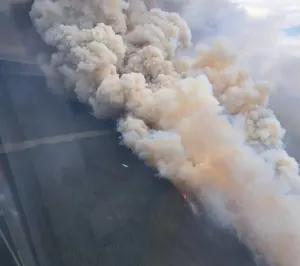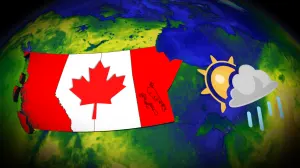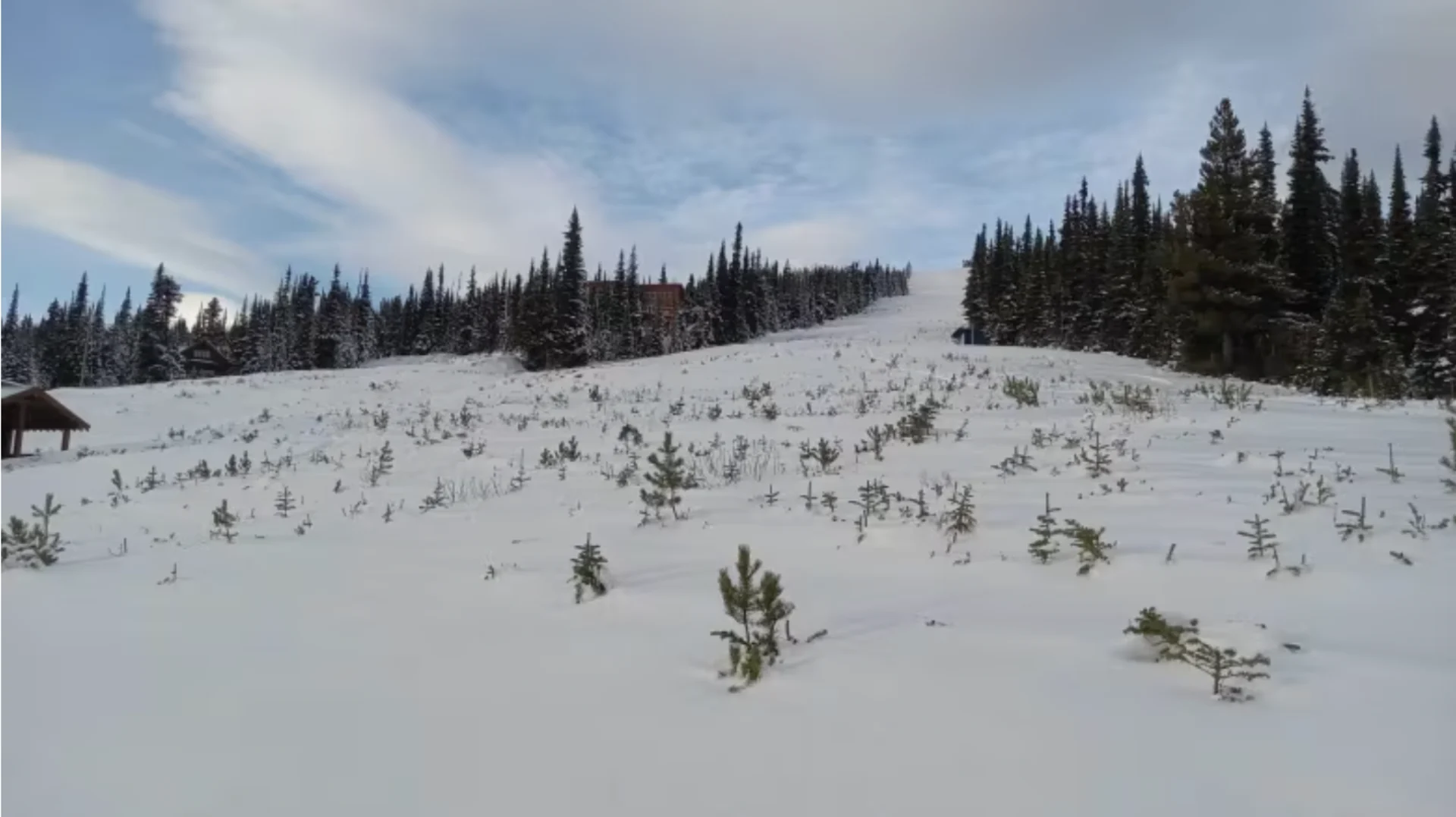
Historic drought means there's almost no snow for ski hills in B.C.'s Interior
Despite the fact it's late November in Smithers, B.C., located about 1,150 kilometres northwest of Vancouver, the picturesque alpine town has no snow on the ground.
Typically, cooler temperatures and precipitation would mean white stuff on the ground by now — enough, says resident Lex Rei-Jones, that people would be shovelling sidewalks, and plow trucks would be scraping the streets.
At Hudson Bay Mountain ski resort, which overlooks downtown Smithers and where Rei-Jones serves as general manager, the situation is better, with about 50 centimetres of accumulated snow.
Visit our Complete Guide to Winter for an in-depth look at the Winter Forecast, tips to plan for it and much more!
To open for ski season, however, Rei-Jones says at least another 30 centimetres is needed.
"We are well below," Rei-Jones told CBC.
"I know that there was a lot of talk this fall and going into this winter about it being an El Niño year and what that means. People were saying it was going to be a slow and delayed start to winter so I had that in my head but this is kind of seeming a little more over the top than what I expected. I expected there to be snow in town and a little bit more on the mountain."

After three consecutive La Niña winters, when conditions tend to be colder and snowier in Canada's western and northern regions, meteorologists are saying the El Niño phenomenon could mean warmer and drier weather.
The prospect of El Niño conditions — on top of historic drought conditions that have extended into the fall — has the attention of those who operate ski hills in B.C.'s Interior.
RELATED: Shakeup in B.C. weather sees multiple rain and snow chances
El Niño could mean lower snowpack
According to Environment Canada, El Niño is marked by a warming of surface waters in the eastern tropical Pacific, extending westward from Ecuador.
Armel Castellan, a meteorologist with the national weather agency, says the current El Niño is registering a water temperature change "upwards of a degree-and-a-half warmer than seasonal in that area of the Equatorial Pacific," which makes this El Niño a strong one.
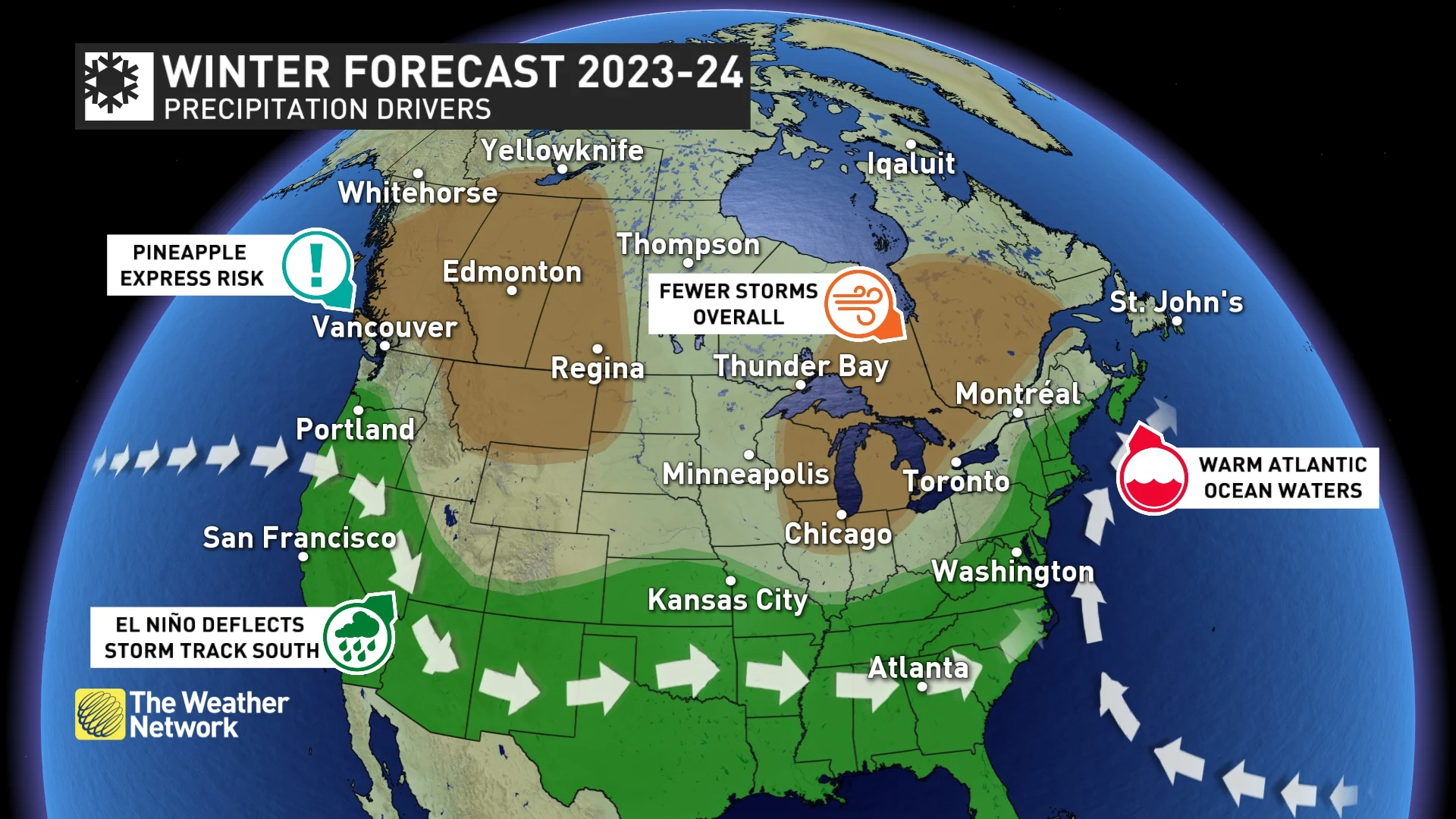
As for the impact in B.C., Castellan says sub-zero temperatures and snow will likely occur at higher than normal elevations.
That isn't welcome news for ski hills.
Add ongoing drought conditions into the mix, and the situation for Interior ski resorts and ski enthusiasts becomes even more uncertain.

Rocks are 'barely covered'
Smithers is still experiencing drought conditions that led to unprecedented levels of wildfire activity in northern B.C. this summer. Climate data for Smithers indicates precipitation levels are lower than average this fall. Historically, about 42 millimetres of snow falls between November and December, and this year only about 14 millimetres has drifted to the ground.
Up on Hudson Bay Mountain, the lack of precipitation in the form of snow is problematic.
WINTER 2024: El Niño will play a critical role in the weeks ahead

Staff members at Hudson Bay Mountain in Smithers, B.C., gather underneath a chairlift during training on Nov. 25, 2023. The ski hill is waiting for enough snow for it to open for the season. (Lex Rei-Jones/Submitted via CBC News)
"It's the rocks that are barely covered," Rei-Jones said. "So you're looking at it and it looks OK, but there's rocks just maybe an inch or so below the surface. And so that's kind of the biggest issue. And then we do have a lot of creek crossings on the mountain, so those don't get filled in."
Rei-Jones says gathering snow from the mountain's snow fences — windbreaks that cause blowing snow to be deposited as drifts — hasn't been possible because "there isn't really anything that we can grab."
SEE ALSO: How 'living snow fences' help make roads safer for drivers during winter
'We would like to have a little bit more'
Other northern Interior ski hills are facing a similar crunch because of a shortage of snow.
Powder King Mountain Resort, about 980 kilometres north of Vancouver in the Pine Pass where there's usually plenty of snowfall by now, had planned to open on Thursday but said in a social media post earlier this week it's "waiting on more snow."
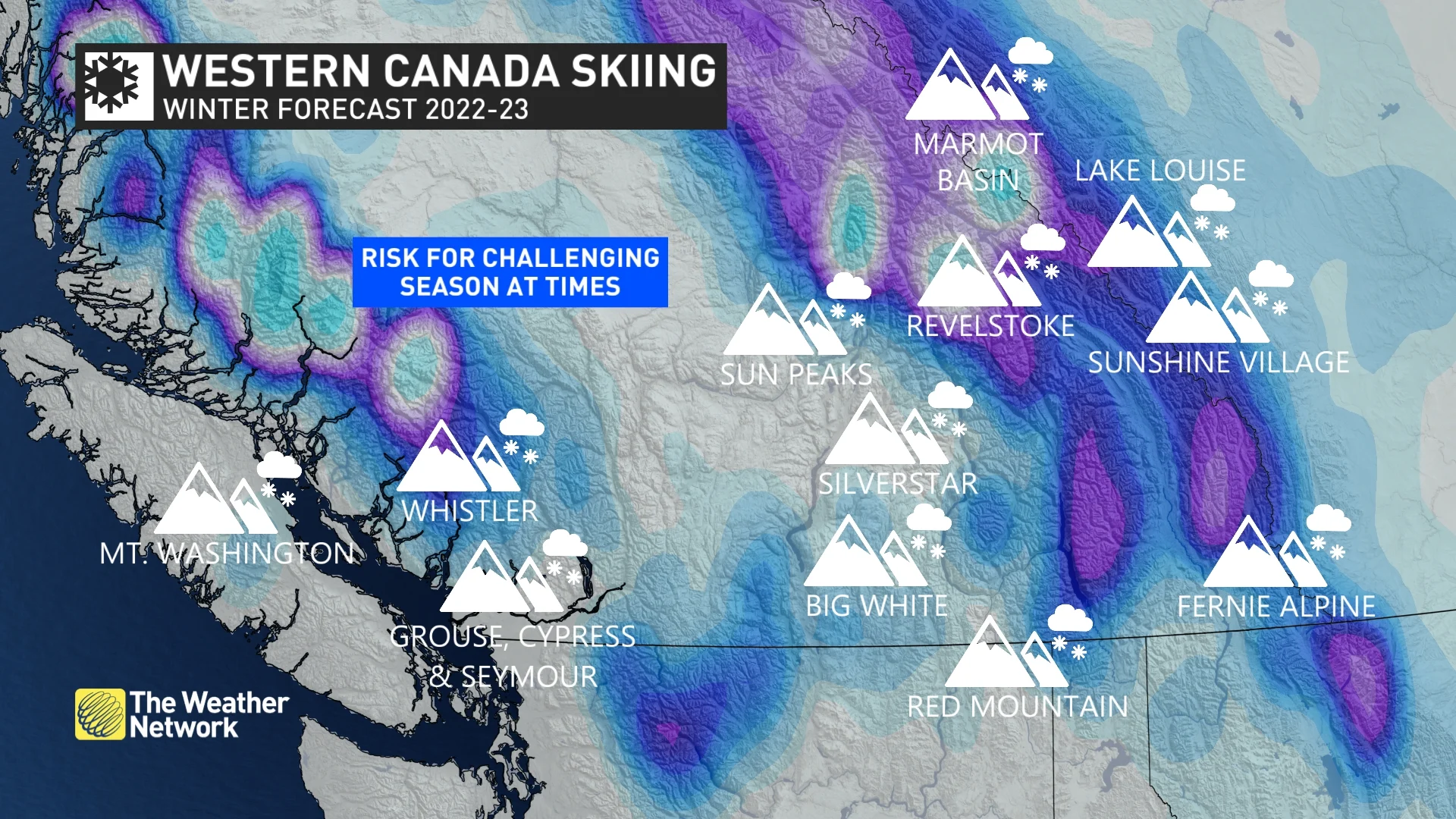
At Troll Resort near Quesnel, about 715 kilometres north of Vancouver, owner Hildur Sinclair told CBC "there's a base of 10 to 15 centimetres in spots, and double that up top," but added "we need more snow."
Farther south, conditions at Big White Ski Resort near Kelowna are similar, with resort vice-president Michael J. Ballingall saying there is currently a snow base of 38 centimetres.
"We normally open with a 70-centimetre base so we're hoping for more snow in the near future," Ballingall said.
WATCH | B.C.'s 2024 Winter Forecast: What does El Niño mean for ski season?
--
This article, written by Jason Peters, was originally published for CBC News on Nov. 29, 2023. Contains files from Daybreak North and Daybreak South. Header image: One of the downhill ski runs at Hudson Bay Mountain in Smithers, B.C., is shown on Nov. 24, 2023. The ski hill is experiencing low snow levels. (Lex Rei-Jones/Submitted via CBC News).







